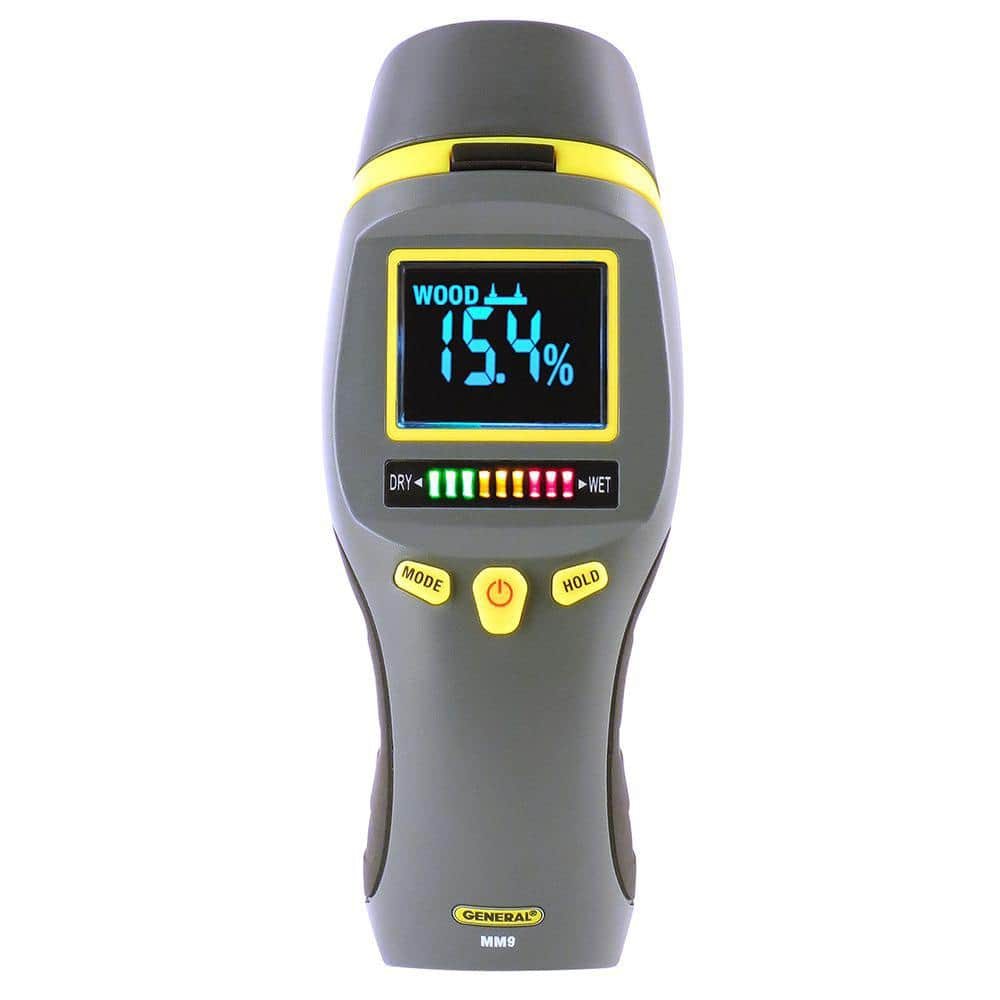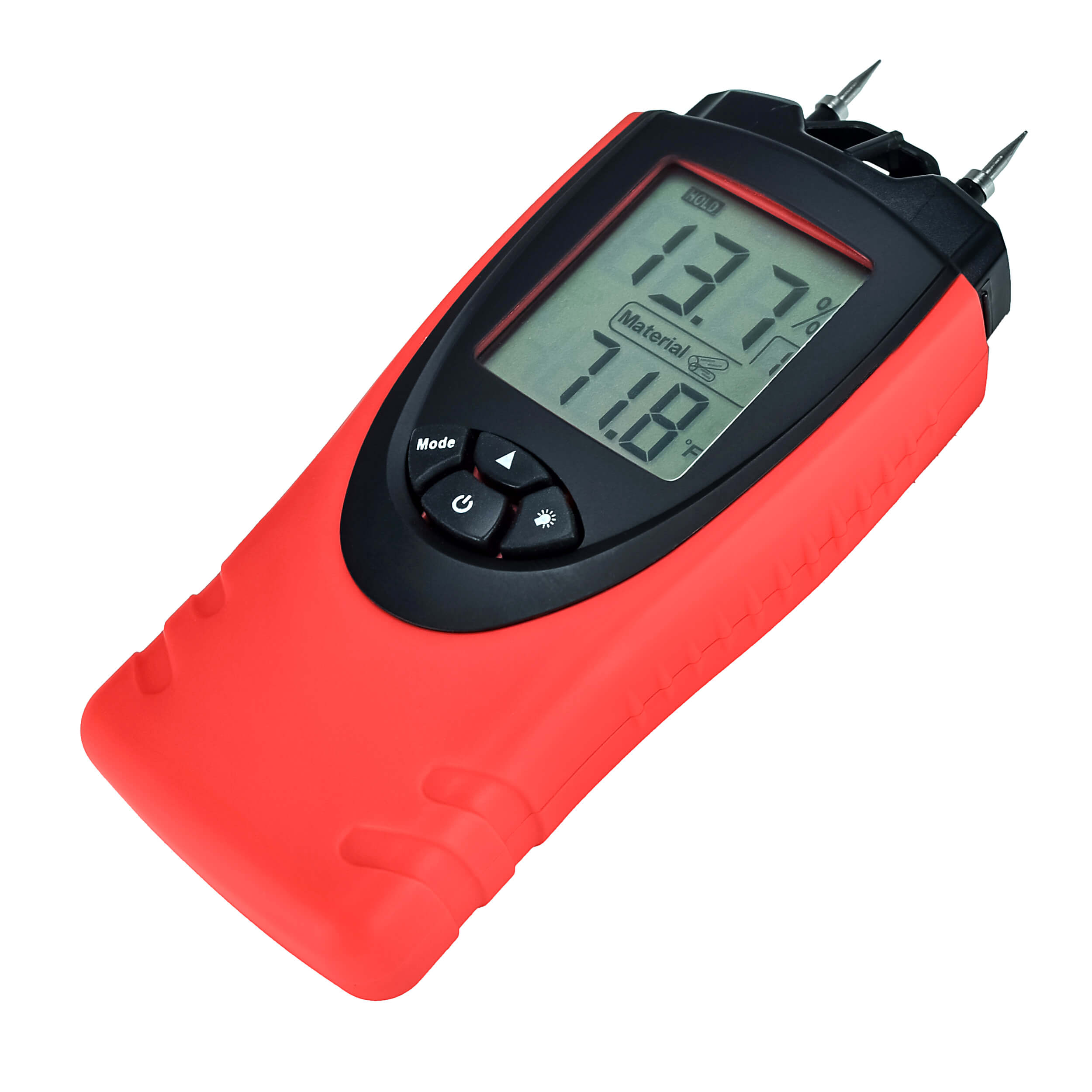The Ultimate Guide to Selecting the Right Moisture Meter for Your Requirements
Recognizing the Relevance of a Moisture Meter in Protecting Against Mold and Water Damages in your house
In the world of home maintenance, the visibility of wetness can frequently be a silent yet powerful enemy, with the ability of creating pervasive mold and mildew development and perilous water damages if left uncontrolled. Among the serene setting of a house, concealed moisture problems can brew below the surface, posturing a hazard to both property and wellness. Nevertheless, furnished with the right tools and expertise, house owners can proactively fight these possible hazards. Recognizing the importance of a moisture meter in this fight is not simply a choice however a calculated requirement.
Significance of Moisture Discovery
Efficient wetness detection techniques are essential for securing residential or commercial properties and protecting against possible mold and mildew development and water damages. Moisture can seep into different structure materials, resulting in architectural problems and wellness hazards. By using a dampness meter, home owners can proactively identify locations susceptible to excess dampness, permitting for timely intervention and mitigation techniques.
Moisture meters supply accurate readings of dampness degrees in various materials such as drywall, concrete, and wood. This information assists in identifying locations of worry, even in hard-to-reach or concealed areas. Early discovery of dampness build-up enables timely repair services or modifications to avoid additional damages.

How Moisture Meters Work
Moisture meters play a crucial role in the positive recognition of excess wetness, assisting in the avoidance of prospective mold and mildew growth and water damage by offering exact readings of moisture levels in different building materials. Some progressed dampness meters combine both pin and pinless modern technologies for thorough dampness detection. Comprehending just how moisture meters feature is crucial for accurate and timely dampness degree assessments, enabling efficient preventive procedures versus mold and water damages.
Detecting Early Caution Indications
Upon first assessment of a residential or commercial property, acknowledging subtle indicators of excess moisture becomes important in the early discovery of possible mold and mildew growth and water damages. Some common early caution indications include musty odors, water spots on ceilings or wall surfaces, peeling off paint or wallpaper, and distorted or stained surfaces. Musty smells commonly show the visibility of mold or mildew, also if no visible indications are obvious. Water spots can signal leakages or infiltration, while peeling off paint or wallpaper may be a result of dampness endangering the attachment of these products to the surface. Deformed or tarnished surface areas, such as distorting floorboards or tarnished drywall, are clear signs of water damages. Additionally, a boost in allergy symptoms or respiratory system problems amongst owners might recommend the existence of mold and mildew due to excess moisture. By promptly determining and addressing these very early indication, home owners can reduce the danger of considerable mold development and water damages in their properties.
Preventing Mold Development
Acknowledging very early caution indications of excess dampness within a building not just makes it possible for punctual detection of possible mold growth and water damage but additionally offers as a positive action in protecting against the spreading of mold. To successfully stop mold and mildew development, it is vital to resolve any kind of sources of moisture without delay. This can include fixing anonymous leaks in pipes, roofs, or windows, guaranteeing appropriate ventilation in damp areas like restrooms and kitchens, and utilizing dehumidifiers in high-humidity spaces. Consistently examining and keeping the property's pipes, roofing system, and seamless gutters can also assist in preventing water invasion that can result in mold and mildew development.
Along with resolving moisture sources, keeping indoor moisture levels below 60% can significantly inhibit mold growth. Proper ventilation, adequate insulation, and using air conditioning system or followers can aid regulate indoor humidity degrees. Checking dampness degrees in locations vulnerable to wetness, such as cellars and crawl rooms, making use of a moisture meter can also assist in very early discovery of elevated wetness levels and potential mold and mildew development. By taking proactive actions to avoid excess dampness and mold and mildew growth, house owners can secure their property and interior air top quality.
Benefits of Routine Monitoring
Regular tracking of wetness levels in a residential or commercial property can play a critical role in maintaining a healthy interior setting and preventing potential mold and water damage. By routinely inspecting wetness degrees, house owners can view website detect any type of problems immediately and take needed activities to protect against mold growth and water damage.
Furthermore, regular surveillance permits property owners to track patterns and trends in wetness degrees gradually. By establishing a baseline and monitoring modifications, people can recognize any kind of areas of issue or prospective susceptabilities in the home's structure. This data-driven approach makes it possible for targeted treatments and maintenance initiatives to attend to underlying problems before they escalate into more significant issues. Eventually, the constant tracking of moisture degrees equips property owners to secure their residential or commercial property, protect their health, and maintain the integrity of their indoor environment.

Verdict

By using a dampness meter, home proprietors can proactively recognize locations prone to excess moisture, allowing for prompt treatment and reduction techniques.

Checking dampness degrees in locations vulnerable to moisture, such as cellars and have a peek at this website creep areas, utilizing a wetness meter can likewise aid in early detection of raised dampness degrees and prospective mold and mildew development. (Moisture Meter)